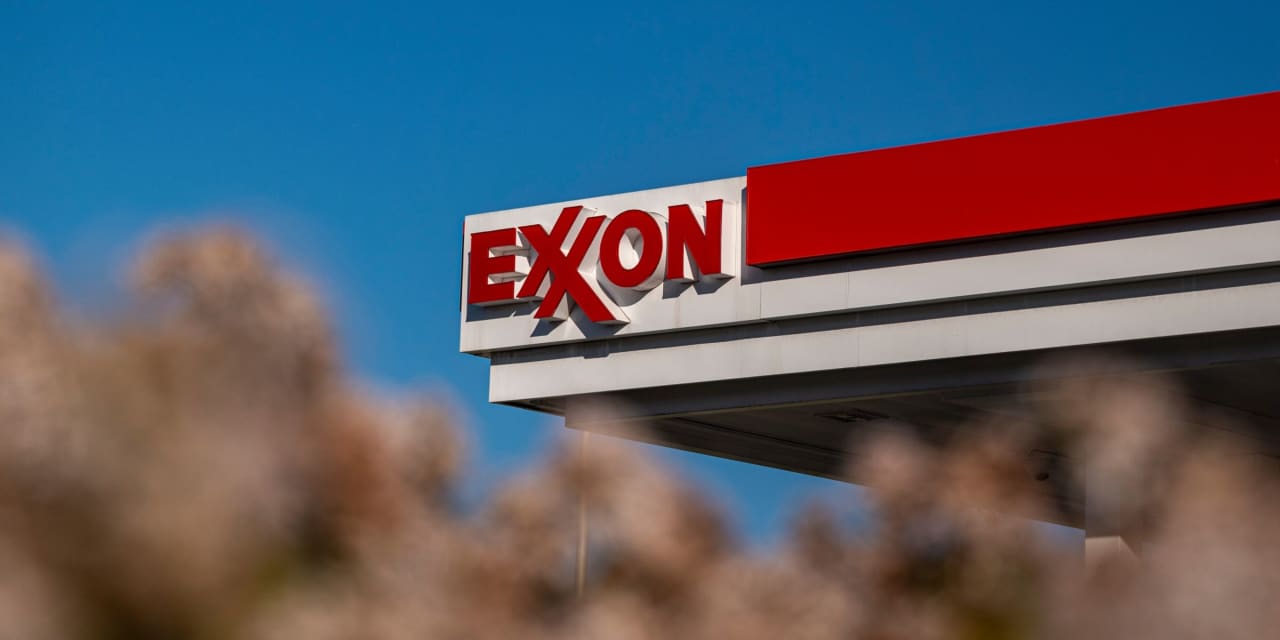Exxon Mobil
is pushing further into lithium production, punishing shares of traditional lithium miners.
Exxon
(ticker: XOM) said Monday it had drilled the first wells at an Arkansas lithium project that will employ new technologies to bring lithium products to the market. Most of the output will end up in batteries for electric vehicles.
Exxon stock was up 1% on Monday afternoon, while the
S&P 500
was flat and the
Dow Jones Industrial Average
had risen 0.2%.
Shares of lithium miners
Albemarle
(ALB) and
Livent
(LTHM) were down 1.9% and 6.8%, respectively. Fear of increased supplies of the commodity is most likely what is driving down those stocks.
The moves added about $4 billion in market capitalization to Exxon while taking about $400 million from
Albemarle
and
Livent.
Of course, the Exxon project isn’t new. The only thing that was new on Monday was the news release.
What is more, how much lithium products from Arkansas will cost also matters for the industry. Albemarle and Livent produce lithium from some of the lowest-cost salt brines on the earth. New commodity capacity tends to come on at the high end of the global cost curve. Miners tend to use their best assets first.
The Exxon asset isn’t a traditional resource. It will use a new process called direct lithium extraction. How much that will cost isn’t clear. Exxon didn’t immediately respond to a request from Barron’s for comment about its expected production costs.
Exxon’s process will pump brine from underground, use technology to extract the lithium from the brine, and pump the lithium-less brine back underground. That is a little more processing than traditional brine-based producers have to do today. That adds some cost.
Goldman Sachs
estimates that products coming from assets using direct lithium extraction will cost more than the lowest-cost brine, but less than than some other lithium assets. That is theoretical at this point. Direct lithium extraction isn’t in use yet.
The Exxon project is expected to produce enough commercial products by 2027 to power 1 million electric vehicles a year.
That would be, very roughly, 50,000 tons of benchmark lithium product. The global market for lithium products in 2023 is expected to be roughly 1.2 million metric tons, according to Albemarle. More than half of that will end up in batteries for EVs.
The Exxon project represents about 5% of global capacity today. By 2027, it would represent roughly 3%.
The addition is relatively small and the impact on existing producers isn’t certain, but investors don’t appear to be thinking about that right now. Through early trading Monday, Albemarle and Livent shares were off about 64% and 60%, respectively, over the past 12 months, roughly tracking a decline in the price of lithium. Benchmark lithium prices are down some 70% over the same span.
Rising lithium production, slowing EV growth, and battery makers working off lithium inventories all have contributed to the drop.
Investor sentiment toward Albemarle stock and shares of its peers won’t turn around until lithium prices are higher.
Fifty thousand tons of lithium products would generate roughly $1.2 billion in annual sales at current prices. That is fine, but small relative to the size of Exxon—the company is expected to generate $350 billion in 2023 sales.
More capacity is a problem for the lithium industry. It isn’t guaranteed to be good for big oil either. EVs replace gasoline-powered cars.
The problem Exxon has is that lithium volumes aren’t like oil volumes. Oil is consumed by each internal-combustion-powered car on Earth every year.
Lithium
stays in the batteries and electricity is what gets consumed.
That means lithium is more like the gas tank than it is the gasoline.
Write to Al Root at allen.root@dowjones.com
Read the full article here












Leave a Reply